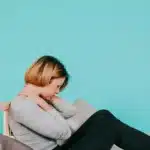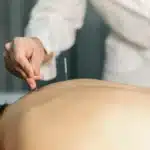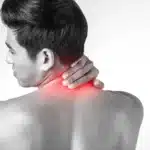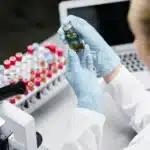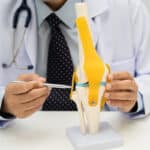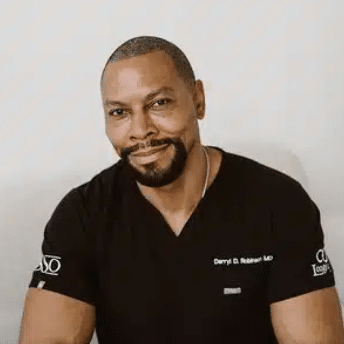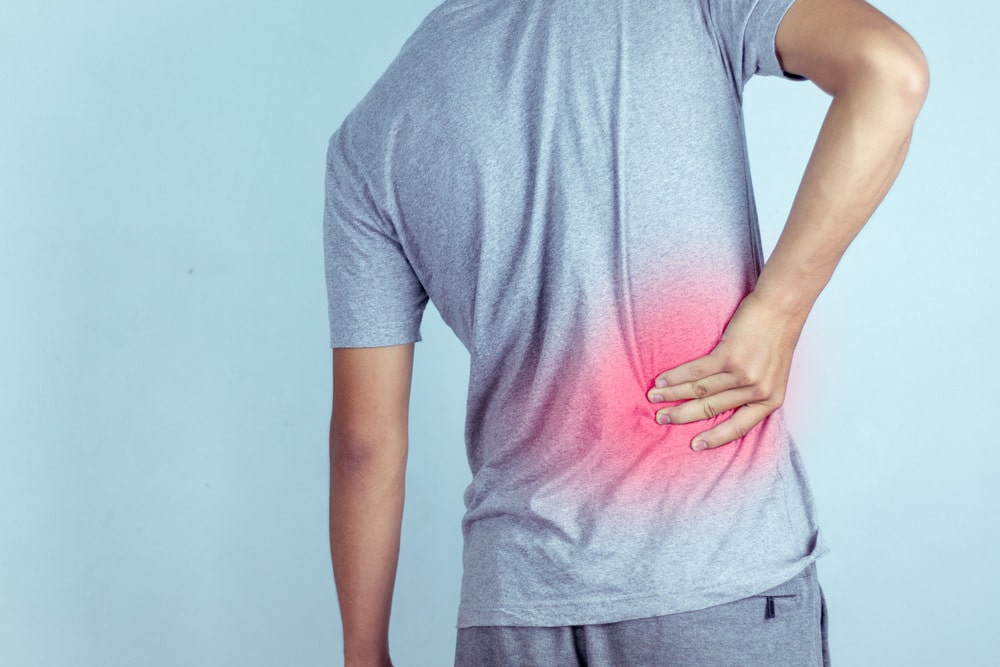
Many people experience lower back pain at some point in their lives. Whether it’s caused by prolonged sitting or a sudden injury, lower back pain can be debilitating, and it can have a significant impact on your daily routine. In this article, we cover common causes of lower back pain, treatment options, and self-care tips to alleviate pain and to restore function. Keep reading to learn how to combat this common condition.
Common Causes of Lower Back Pain
Lower back pain can occur suddenly or develop over time as a result of underlying health conditions, injury, or repetitive strain. Age can also play a role in lower back pain, as the spine experiences natural wear and tear as you get older.
Below are some of the most common causes of lower back pain.
Spinal Arthritis
If the cause of your back pain is not a muscle strain, it may be related to a spinal structure issue. Spinal arthritis develops when the cartilage between the vertebrae in the spine wears down, which can result in severe pain and stiffness in the lower back. It can be caused by aging, genetics, or repetitive strain injury.
Back Injuries
Lifting heavy weights improperly or making sudden movements can result in lower back sprains and strains, which can cause severe pain and limit mobility. If symptoms don’t improve with home remedies or over-the-counter medications, it’s essential to seek professional help to prevent complications.
Herniated Disks
A herniated disk occurs when the inside of a spinal disk pushes through a tear in the tough outer layer surrounding the center of the disk. If the herniated disk is located in the lumbar region, this can compress nearby nerves and cause lower back pain. The wear and tear associated with aging also raises the risk of developing herniated disks. Mild cases can improve with conservative treatment; however, more severe cases may require surgery.
Poor Posture
Slouching while working is a very common cause of lower back pain among office workers. Consistently maintaining poor posture can place excessive stress on your spine and lead to lower back pain over time. For this reason, it’s crucial to have an ergonomic work setup and to make a conscious effort to maintain good posture throughout the day.
Muscle Strains
This is one of those terrible problems that only people who have experienced it can understand. Dr. Robinson will test the type of injury to diagnose it.
Other Medical Conditions
The following medical conditions are also sometimes associated with lower back pain:
- Kidney stones
- Pancreatitis
- Endometriosis
- Ovarian cysts
- Uterine fibroids
- Ulcerative colitis
- Scoliosis
- Spinal cord tumors
- Spinal infections
- Fibromyalgia
Diagnosis of Conditions Underlying Lower Back Pain
When you seek medical help for lower back pain at Oklahoma Spine and Pain Management, Dr. Robinson will identify the cause of the pain and then provide a personalized treatment plan. Diagnosis involves a number of steps, including the following.
Medical History Review
First, Dr. Robinson will review your medical history. You may be asked about previous injuries and ongoing conditions. You may also be asked to share details about your lifestyle that could be relevant to the diagnosis. In addition, Dr. Robinson may ask you about past and ongoing symptoms, including information such as when the pain started, what triggers it, and what factors cause the pain to intensify or to ease.
Physical Exam
During the physical exam, Dr. Robinson may assess your posture and mobility. Your reflexes and muscle strength may also be tested. Dr. Robinson may observe which movements trigger pain, and you may be asked to rate your pain on a scale of one to ten.
Tests
Diagnostic tests to identify the root cause of your lower back pain can include the following.
- MRI or a CT scan: These tests provide detailed images of the spine, showing any problems, such as a herniated disk or issues with muscles, tissues, nerves, and more.
- Electromyography (EMG): EMG assesses the health of the muscles and the nerves.
- Blood tests: This test determines the presence of infections or other conditions that can trigger back pain.
- Urine tests: The test is used to diagnose kidney stones, which can cause pain in the lower back.
Treatment Options for Lower Back Pain
Dr. Robinson may first address lower back pain by suggesting minimally invasive, non-surgical solutions. If this type of treatment is ineffective, he may recommend surgery. Below, we cover some of the best lower back treatment options to alleviate pain and discomfort:
Emsculpt Neo
Emsculpt Neo is an advanced technology used to help address issues ranging from pain management to body contouring. The non-invasive procedure uses radiofrequency energy (RF) to heat the muscles, preparing them for the stress of intense muscle contractions and thereby increasing blood circulation. It also uses high-intensity focused electromagnetic energy (HIFEM) to target muscles, inducing up to 24,000 supramaximal contractions in thirty minutes.
These contractions are involuntary and therefore much more intense and deeper than those that can be achieved by traditional exercises such as crunches and squats. The short duration and the intensity of the treatment also force muscles to adapt, increasing the muscle fiber density and volume. As a result, the core muscles that support the spine are significantly strengthened, helping relieve lower back pain. Additionally, physical therapy that improves the range of motion is a recommended supplement.
Epidural Steroid Injections
Epidural steroid injections are a common treatment for lower back pain, particularly when the pain is caused by conditions like herniated disks, spinal stenosis, or nerve compression. The procedure involves injecting a corticosteroid medication, often combined with a local anesthetic, into the epidural space around the spinal cord. The steroid helps reduce inflammation and swelling around the nerves, which can alleviate pain, numbness, and tingling.
This treatment can provide significant relief for individuals suffering from chronic or acute lower back pain, often allowing them to engage in physical therapy or other rehabilitative activities to improve their condition further.
Radiofrequency Ablation
Radiofrequency ablation (RFA) is a minimally invasive procedure used to treat chronic lower back pain, particularly when it’s caused by issues in the facet joints, which are small joints in the spine that can become inflamed or irritated. RFA works by using heat generated from radiofrequency waves to target and deactivate the nerves responsible for transmitting pain signals from these joints.
By interrupting the pain signals, RFA can provide significant, long-lasting relief from lower back pain, often reducing the need for more invasive treatments like surgery. The procedure typically offers quick recovery times and can improve mobility and quality of life for many patients.
Surgery
Surgery may be recommended if conservative treatment is failing to provide you with relief. Depending on your condition, your healthcare professional may recommend a minimally invasive procedure or a more complex operation. Surgery can effectively address the cause or causes of underlying lower back pain and restore your body’s function.
Self-Care Tips to Ease Lower Back Pain
There are certain lifestyle changes and practices you can implement to prevent and alleviate lower back pain, including the following.
- Emsculpt Neo to strengthen core muscles: The muscles in your abdominal area provide your spine with essential support. Weak core muscles can lead to extra strain on your lower back, which is why maintaining a strong core is so important. Try to incorporate ab-strengthening exercises like planks and crunches into your daily routine to improve your core strength. For the most effective outcome, in addition to home exercises, we recommend Emsculpt Neo, as it engages deep muscle fibers, strengthening them and promoting their growth.
- Daily stretches: To relieve lower back pain, try incorporating pelvic tilts, cat-cow pose, knee-to-chest stretch, and child’s pose into your daily routine.
- Getting enough sleep: To prevent lower back pain, we recommend sleeping at least seven hours and avoiding sleeping on your stomach, as this position can be hard on your back.
- Maintaining a healthy weight: Extra weight puts more pressure on the lower back and increases the risk of developing pain. We recommend a balanced diet and regular exercise to maintain a healthy body weight.
Treat Lower Back Pain With Oklahoma Spine and Pain Management
Lower back pain can be a minor inconvenience or a severe burden. When it gets to the point of interfering with your daily activities, it may be time to consider seeking professional help. At Oklahoma Spine and Pain Management, we provide personalized treatment to alleviate pain and to improve function. Our team has years of experience in treating lower back pain caused by various conditions and injuries. With our holistic approach, we can help you regain mobility and improve your quality of life.
Frequently Asked Questions (FAQs)
Which lifestyle factors increase the chances of developing lower back pain?
The following factors can increase your chances of developing lower back pain:
- Sedentary lifestyle
- Arthritis and related conditions
- Poor diet and sleeping habits
- Obesity
- Depression or stressful life events
- A job that requires frequent lifting
- Poor posture
Can lower back pain be a sign of cancer?
Lower back pain is rarely a sign of cancer. In very few cases, it can be a symptom of a spinal tumor. However, this is very uncommon. It’s more likely for back pain to be caused by one of the lifestyle factors listed above.

